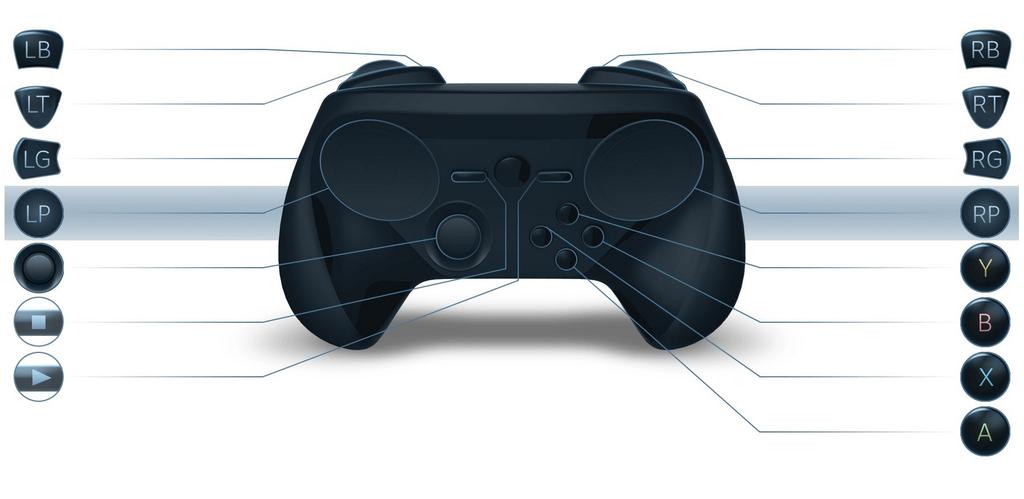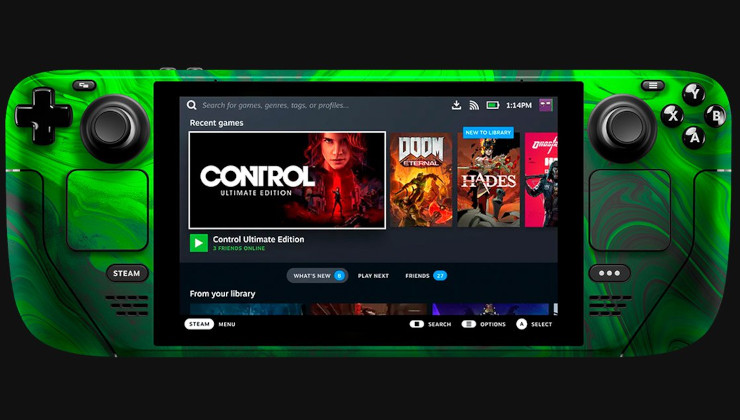
Something I've noticed about the Steam controller is not very many gamers understand why it has trackpads (well, maybe more people are getting it lately) and why this may be superior in some use cases, so here's a simple breakdown of my thoughts:
Character movement — With keyboard and mouse in some games, especially in shooters, you are given eight inputs for character movement, W, A, S, D, W+A, A+S, S+D and D+W. You can say the inputs multiply with the crouch and sprint keys, so you have eight directions of character movement and three movement speeds. Compared to analog stick controllers, that's still not a lot for classic style shooters, though it's adequate. You can jog, run and crawl along two axis. It's good enough. I don't know how many fine grain inputs an analog stick controller grants you, but I don't have to explain how fine character movement is with an analog stick. In my personal opinion, analog sticks are usually superior for character movement except for in use cases such as platformers, fighters and in Quake II style games. BUT analog stick controllers have a downside…
Aim — Analog stick controllers are obviously not ideal but are workable where a cursor or aim reticle are used. This can be subjective as some people have a hard time adapting away from analog stick aiming, but I digress. We all know analog sticks aim are based on the amount of lean for camera rotation/cursor movement and timing its release. It's not ideal for fine grain aiming and auto aim becomes a common feature for console first person and third person shooters as a consequence.
What may have dawned upon Valve is that smartphone shooters like Dead Trigger have the fine grain character movement of consoles and the fine aiming of PC, but smartphones are very unwieldy because they are not meant to be game controllers (no ergonomics and no wide array of hardware buttons). Not to mention you can lose track of where your thumbs are relative to the smartphone screen because of its flat surface, causing players to occasionally move in undesired directions. The Steam controller borrows from smartphone shooter controls, adds ergonomics, hardware buttons dedicated to gaming and puts concave trackpads with circular ridges in place of the non-tactile glass surface. Valve's aim was to allow both M+K and console controls to work on their controller, because not all PC games feature console controller support. The end result is taking more PC titles to the big TV and couch, which was Valve's goal all along. The positive side effect is the two finer controls of movement and aim are brought together in an actual controller.
I don't know if the trackpads will solve the problem of forgetting where your thumb is for character movement as I have not had the opportunity to use the Steam controller myself, but there is an analog stick in the more recent mockup design the public had seen (same image as above), so even if there is a problem, you can fall back to having an analog stick where you can most certainly feel the angle and strength of your thumb against it and the right trackpad is still there for aiming.
Side note: I hope a D-pad makes it in the official release or the left trackpad does a great job of emulating one.
So, long story short, the Steam controller was dreamt up to bring PC games to the couch with trackpads, bringing together the best of mouse and keyboard as best as possible. It is not expected to be a perfect replacement for mouse and keyboard, but for a number of PC games, it may do the job quite nicely.
Also, it just might do one better over analog stick controllers and I think that fact alone should be enough to not fuss over it? Well, people are still fussing, so I took a stab at explaining a few reasons why Valve is making such a unique controller.
Some you may have missed, popular articles from the last month:




Though, I disagree about smartphone shooters not having fine aim. Maybe not as fine as mouse aim, but it's a lot better than analog stick by a long shot.
I've had too much time with following the development in this much detail, obviously.